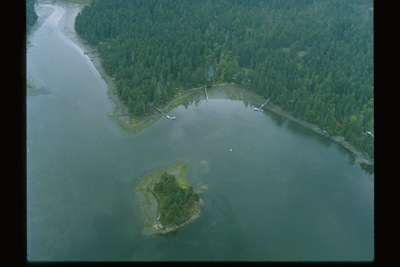 Aerial view of Garrison Bay (© Washington Dept. of Ecology)
Aerial view of Garrison Bay (© Washington Dept. of Ecology)
Garrison Bay, located on the west side of San Juan Island, was named after the military camp established by the British following the Pig War eruption in 1860. The bay is characterized by muddy substrate, which is overlain by a thick diatomaceous layer close to the shoreline. Coarse shell material is abundant within the mud, along with numerous boulder-size rocks. Both the shells and rocks provide microhabitats for many organisms found in the bay, including polychaetes, crabs, nudibranchs, brittlestars, bryozoans, limpets, anemones, chitons, sponges, and gastropod egg masses.